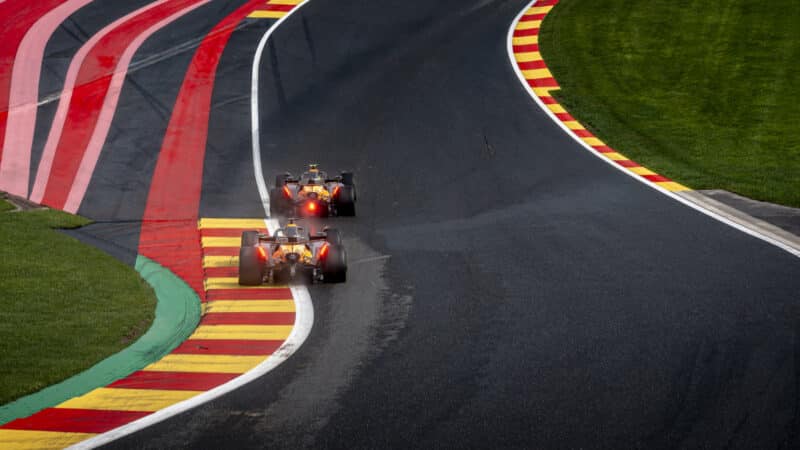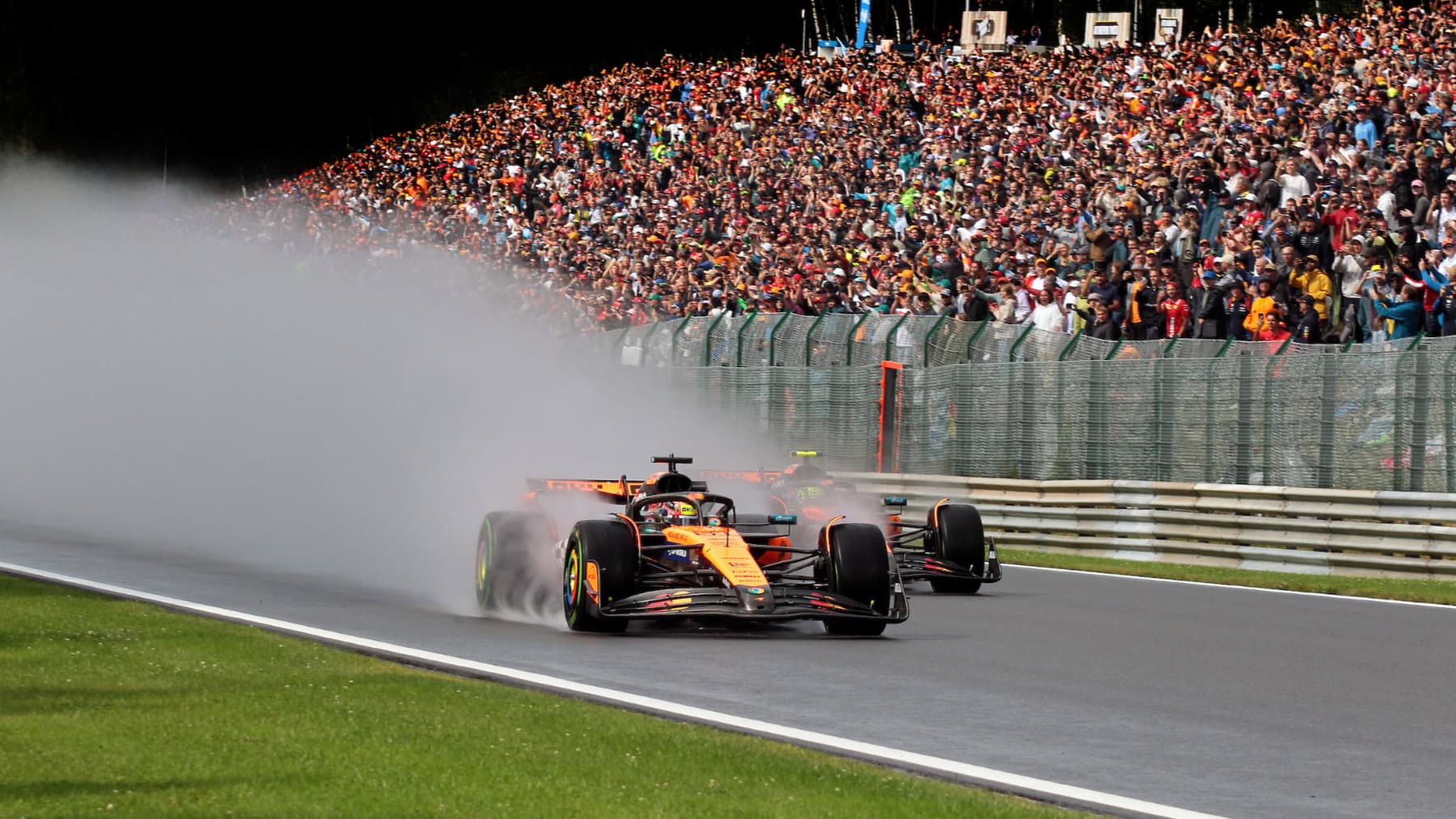
Martin Brundle reveals his F1 driver of 2025
Veteran broadcaster and F1 driver Martin Brundle has picked out the contender he's been most impressed with this year

Getty Images
In the end, it turned out to be quite a benign Belgian Grand Prix, 70% of it run on dry tyres, with Oscar Piastri on his medium C3s delicately holding off his hard C1-shod McLaren team-mate Lando Norris. But a couple of hours earlier, with Spa’s valleys assaulted by heavy rain, the visibility up the Kemmel straight virtually zero as the cars circulated behind the safety car on the formation lap, it looked potentially terrifying.
We’ve been here many times before, of course. This is just the natural consequence of holding a grand prix around this beautiful historic circuit with its dramatic contour changes amid the forests, creating its own mini-climate. But this is also 2025, and memories of terrible accidents at the crest of the hill up to that straight are too raw and recent for that not to play a part in the race director’s judgement. So first of all, there was a delay of over an hour while the worst of the rain passed – and when the cars were finally let loose on their intermediate tyres it was from behind the safety car which had headed the pack for four exploratory laps.
Piastri, who had been disappointed not to have repeated his sprint pole, had been hoping for a standing start. To give him a better chance of compromising pole-sitting team-mate Norris into La Source and thereby get himself a better run through Eau Rouge so as to slipstream into the lead, standard Spa-style. But a rolling start made things potentially easier for Norris. Instead, Piastri resolved to lift less than Norris through Eau Rouge and at the top of the hill through Raidillon. He did so, he held onto it and emerged from the spray on the Kemmel Straight to pass long before they’d even reached the braking zone for Les Combes. It was the race-winning move.

It evolved into a straight duel between the two McLaren drivers as the MCL39 had such an advantage around here. By the time everyone was thinking of getting off their worn inters and onto slicks, around lap 11-12, they already had 10sec over the closely-matched Charles Leclerc and Max Verstappen. Maybe the latter would have been able to provide more of a threat if the Red Bull had the end-of-straight speed to pass the Ferrari, but it didn’t. Because Red Bull had added plenty of wing in response to the weather forecast and Ferrari had not. In the end, it dried quickly enough for the low-wing approach to work quite well.
Lewis Hamilton in the other Ferrari, rather than line up 16th where his deleted qualifying lap had left him, started from the pitlane, allowing the team to load him up with wing. So Ferrari had both bases covered. In the wet phase and early into the dry, Hamilton made great progress; inventive overtakes and first to pit for inters, he was up to seventh early doors. But the big-winged Ferrari could not penetrate the defences of Alexander Albon in the skinny-winged Williams. Just beyond that was the also skinny-winged fifth-place Mercedes of George Russell. Like that, Albon effectively protected Russell from attack by Hamilton and they finished in that order.
The strategic divergence between the McLaren drivers, which lent the race its intrigue, was formed quite naturally by how quickly the track was dried by lap 11-13 and how worn the intermediates were by then. As the lead driver, Piastri was brought at the end of lap 12 just as soon as the pitwall had observed how quick Hamilton’s sector times were on his slicks fitted the previous lap. The tyres which were readied for him were – as discussed in the team briefing beforehand – mediums.

Norris was the only driver to try the hard tyres in the race
Grand Prix Photo
No one had really tried the hards and there was a fear they’d be too slow. But Norris, a couple of seconds behind, was offered the choice by his race engineer: did he fancy trying the hards to ensure a one-stop? When Norris replied in the affirmative, it meant he had to do an extra lap as the tyres readied in the blankets were mediums. That extra lap on inters lost him around seven seconds, but he was hoping Piastri’s mediums would force him to make an extra stop.
So Piastri’s challenge was to maintain a good combination of pace with tyre management, while Norris’ was to push as hard as possible. He made a couple of small errors as he did so. He got the gap down to 3sec with two laps to go, but Piastri had it all under control. And he’s now 16 points clear at the head of the table.

Veteran broadcaster and F1 driver Martin Brundle has picked out the contender he's been most impressed with this year

Alain Prost has given his view on Renault exiting F1 as an engine manufacturer

Mark Hughes weighs up an exceptional 2025 rookie class, dissecting four contrasting debut seasons to reveal who truly stood out the most

Mohammed Ben Sulayem's has now been re-elected as FIA president, after a controversial first term. But how did he become the first non-European president in the FIA's history?